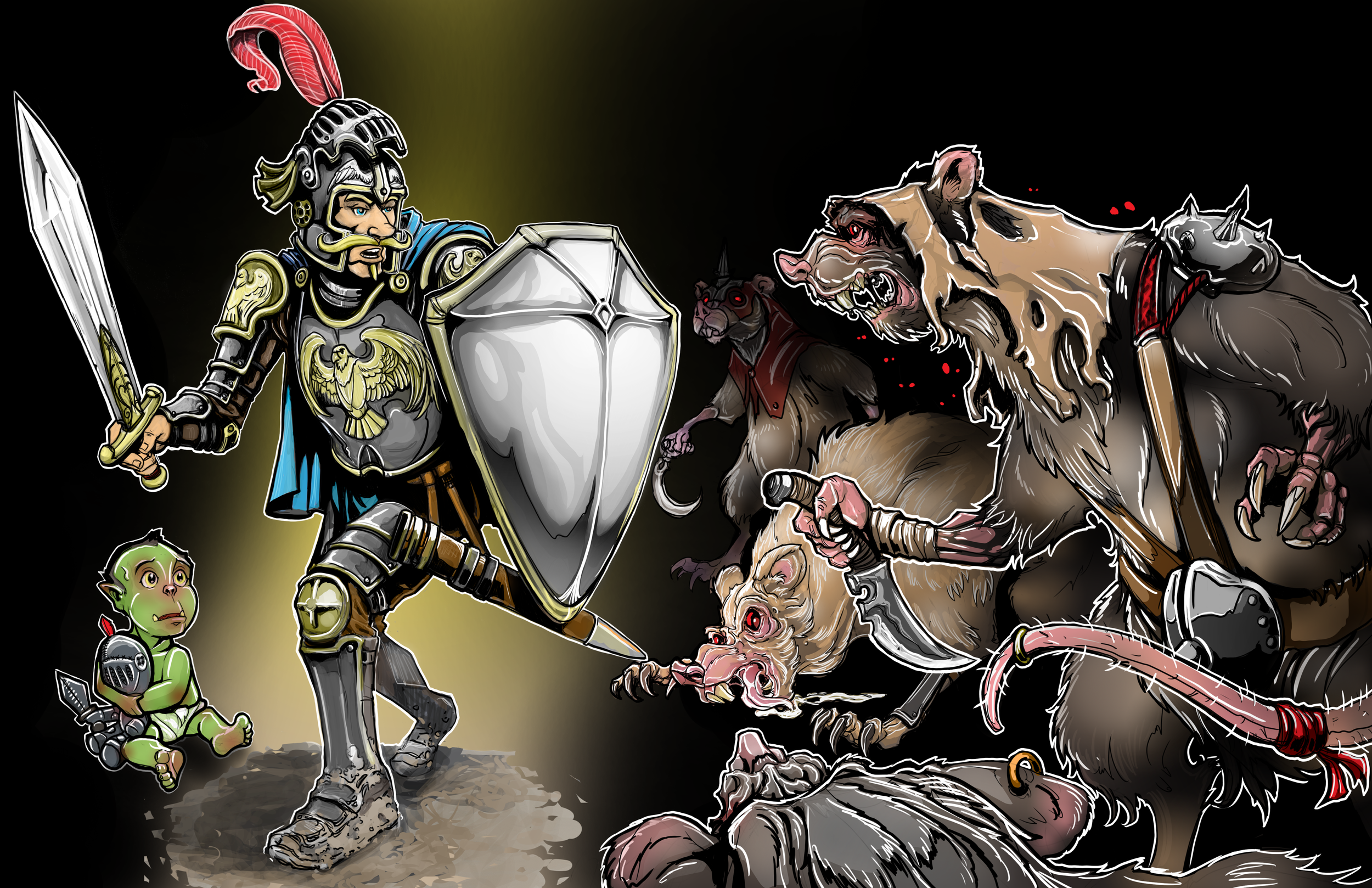Protection 5e
When a creature you can see attacks a target other than you that is within 5 feet of you, you can use your reaction to impose disadvantage on the attack roll. You must be wielding a shield.
Protection 5e: Fighting Style Review
Review by Sam West, Twitter: @CrierKobold
The cleric falls prone, having been nearly broken by the ogre’s maul bash prior. It utters a deep, mocking chortle, lifting its maul above its head, prepared to deliver the final crushing blow. As the weapon descends, the paladin’s head swivels, catching a glimpse of what would otherwise be certain death for their friend. They turn from their opponent to the behemoth, lunging to interpose themself between the brute and their companion, blocking the blow and throwing off the hundred pound weapon, saving a life in the process.
Protection is a clean and simple way to get access to the defender fantasy on fighters and paladins. It may not scale particularly well, but in the early to mid tiers, Protection can shine brightly on a character with another front line companion or two to protect.
Any new reaction a character can get access to tends to radically improve how they feel to play in combat. Going from only attacks of opportunity to a regularly usable, repeatable defensive tool is incredible. Wielding a shield is a low bar for usage, as if you’re not two-weapon fighting or using a two-handed weapon, you’re going to absolutely want to be wielding one anyway for a free +2 AC. With that condition met, you get to repeatedly keep your monk, rogue, ranger, artificer, bladesinger, or other frontline ally alive a bit longer.
Protection suffers from a small issue few of the other styles do, as unlike the other options, it more or less needs to be part of a party with a melee composition that wants to fight side by side. That isn’t going to always be given, and outside of those groups, it can feel like a non-feature you get to use once in every five fights. If you’re the only front line character alongside a wizard, bard, and druid, you may find Protection doesn’t actually empower your build, as you’re regularly alone inside the enemy frontline. Most groups will have a barbarian, monk, or other fighter or paladin to go alongside you, though, and in those situations, you can create a great dynamic between you and them.
As you get into the upper tiers, the problems with Protection do start to become more apparent. Monsters start making multiple attacks, and imposing disadvantage on one starts to feel less and less impactful. Area of effect damage like breath weapons can make positioning for protection more a liability than a boon, to the point where you may start considering swapping it out in the upper tiers for something more genetically useful.
At the low to mid tier, though, Protection I think is excellent. If you want to play the defender archetype as your fighter or paladin, Protection is an easy direction to start with should you have some other melee allies to actually protect.
Thank you for visiting!
If you’d like to support this ongoing project, you can do so by buying my books, getting some sweet C&C merch, or joining my Patreon.
The text on this page is Open Game Content, and is licensed for public use under the terms of the Open Game License v1.0a.
‘d20 System’ and the ‘d20 System’ logo are trademarks of Wizards of the Coast, Inc.
and are used according to the terms of the d20 System License version 6.0.
A copy of this License can be found at www.wizards.com/d20.



